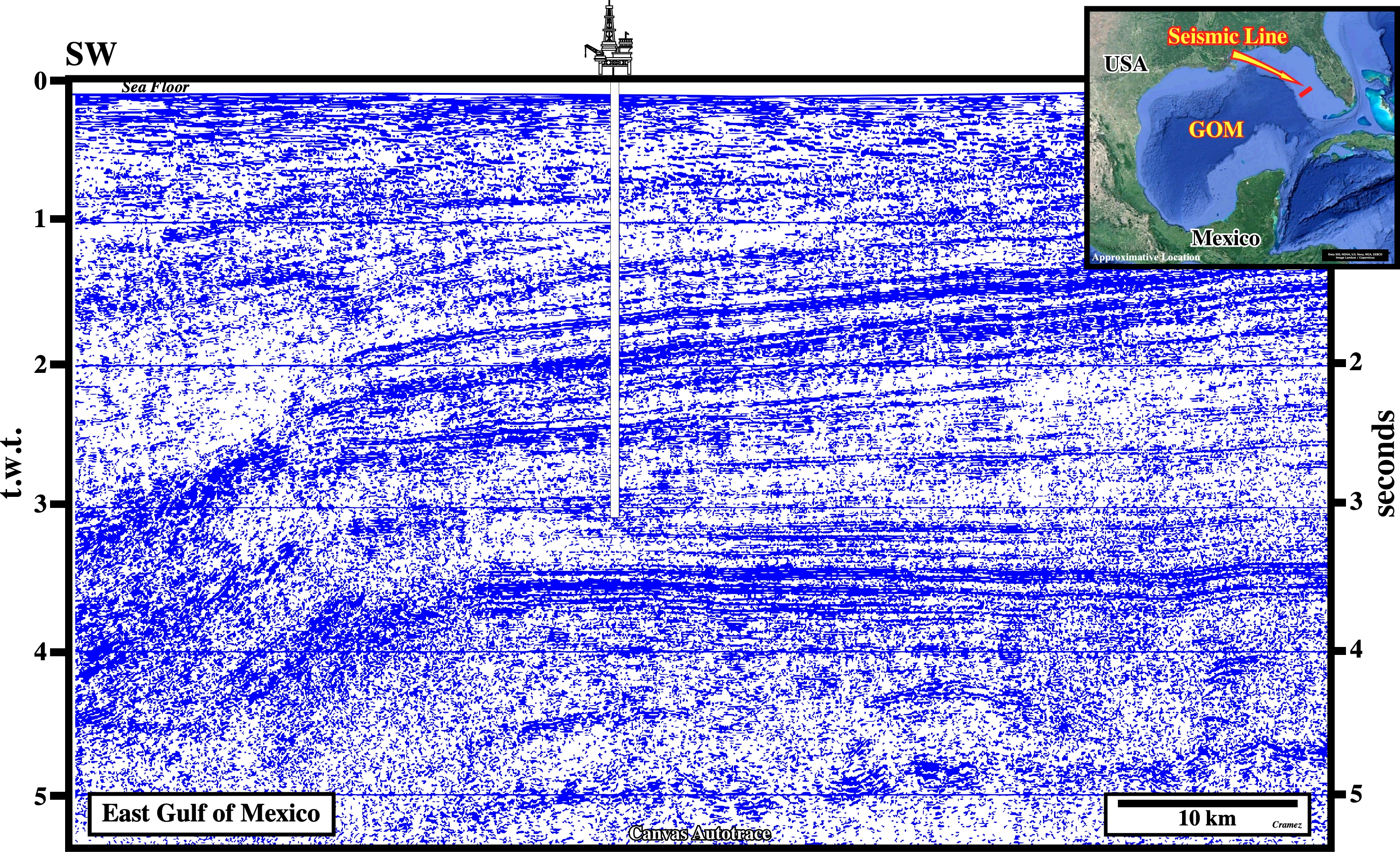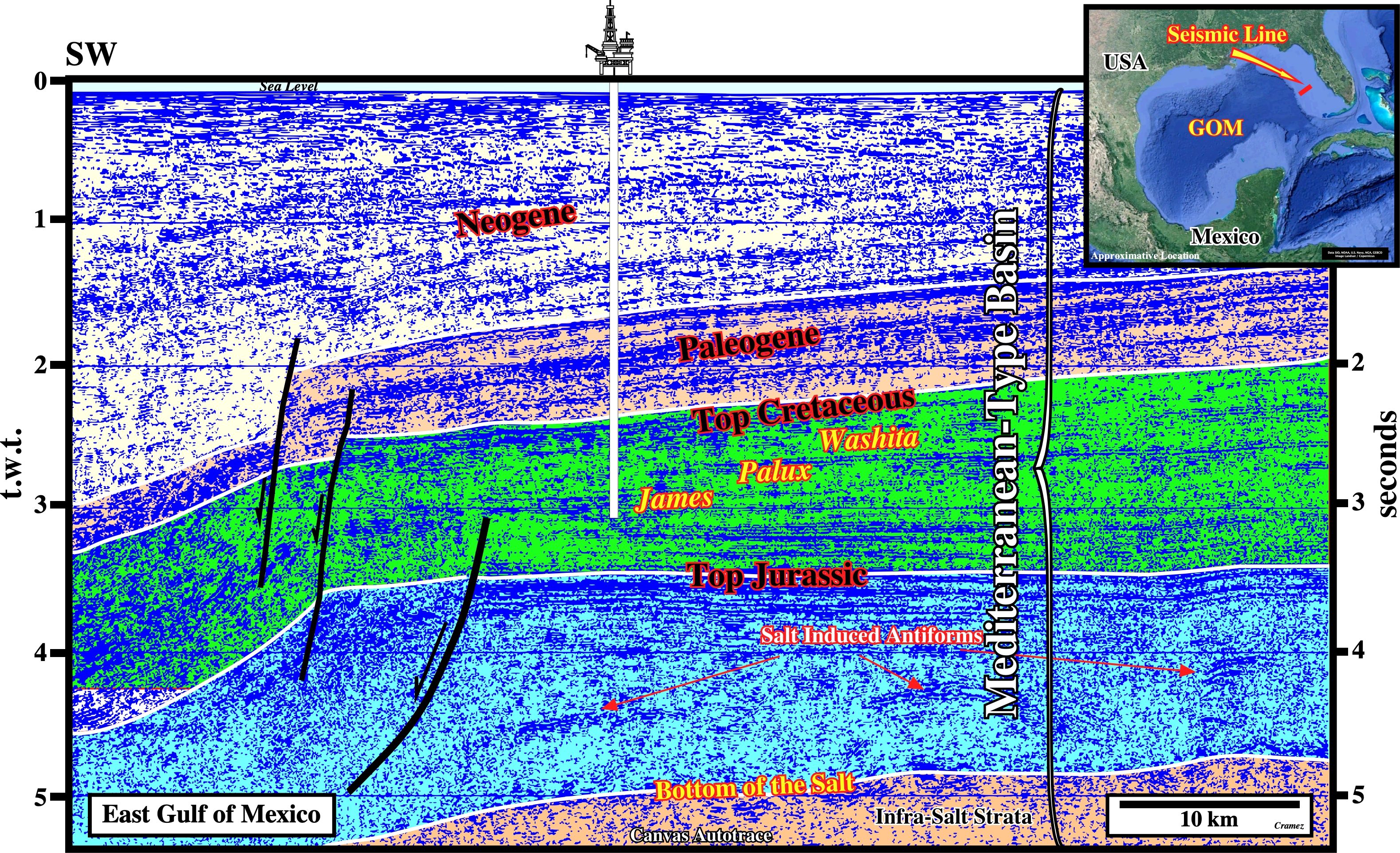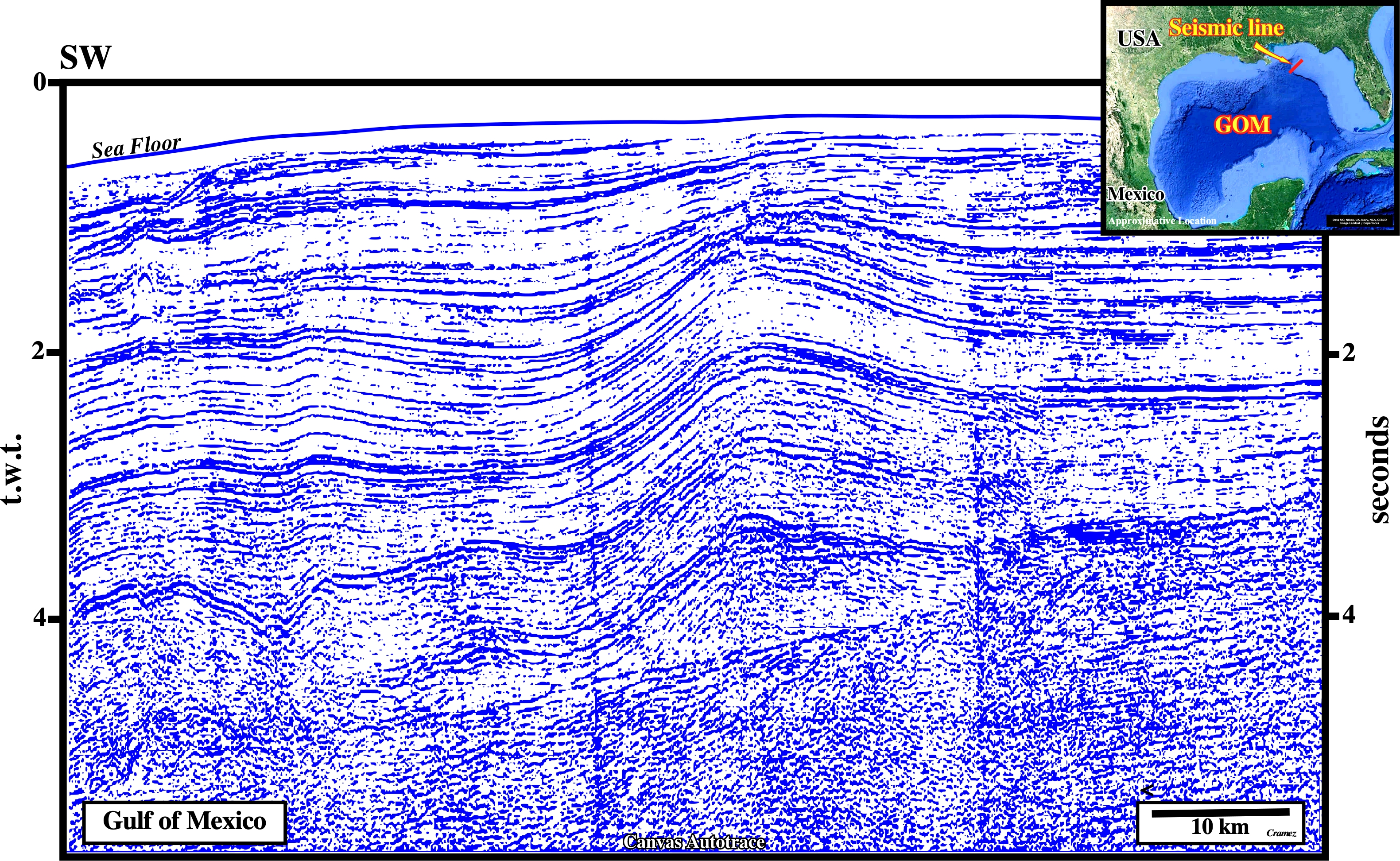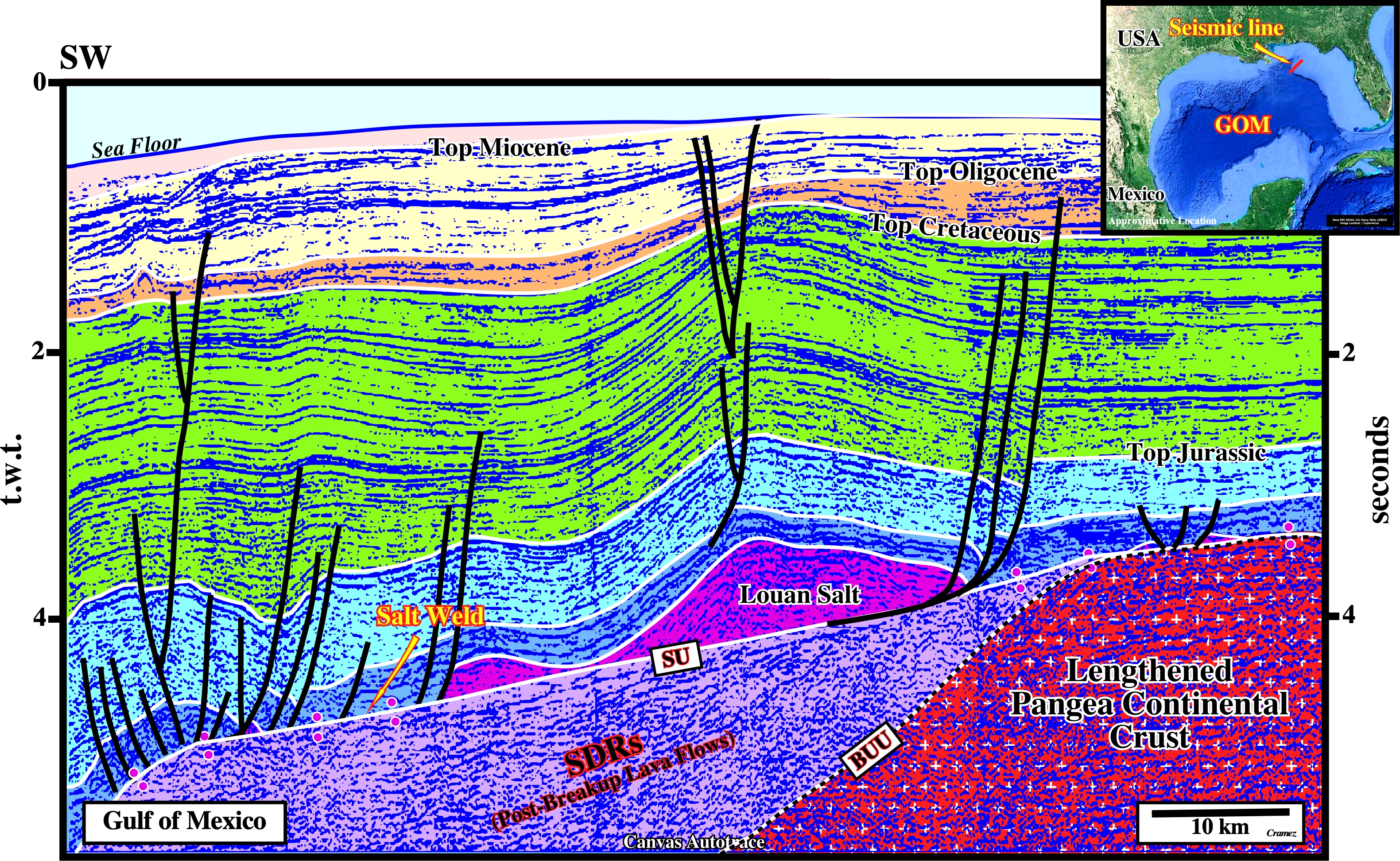

East Gulf of Mexico
Florida Platform


This tentative geological interpretation of Canvas autotrace of a seismic line shot on the NE conventional offshore (< 200 meters) of the Gulf of Mexico (Florida platform), illustrates a Meso-Cenozoic divergent margin (Mediterranean-type basin) developed on a Paleozoic lengthened folded belt (Appalachian fold-thrust belt). As the extension of the Pangea continental crust, which not only included the folded belt but Triassic rift-type basins, was big enough to developed an oceanization, i.e., a breakup of the lithosphere, the margin corresponds to a Mediterranean-type basin (Bally & Snelson's Basin Classification). In fact, after the breakup of the thin and lengthened Pangea continental crust, which includes Triassic rift-type basins, the Mediterranean-type basins starts with the deposition of lava-flows (SDRs), nearby the breakup zone, which form the volcanic section of the margin (infra-salt strata on this tentative interpretation). Over the SDRs and the Pangea continental crust, the Post-Pangea continental encroachment stratigraphic cycle was deposited in association with the Meso-Cenozoic 1st order eustatic cycle, in which, as depicted on this tentative interpretation two stratigraphic phases are obvious (see next autotrace).


On this tentative geological interpretation of a Canvas autotrace of a seismic line shot near the border of the Florida platform, which illustrates the Post-Pangea continental encroachment stratigraphic cycle induced by the Meso-Cenozoic 1st order eustatic cycle, we can recognize the transgressive and regressive phases, which are separated by a major downlap surface. It is easy to see the transgressive phase is characterized by an aggradational (even retrogradational) geometry, while the regressive phase is characterized by a progradational geometry. In other words, it can be said during the transgressive phase the basins have always a shelf what is not the case, at least on the seismic lines (due to the seismic resolution) during the regressive phase. The infra-salt strata comprehend the lengthened Pangea continental crust, in which Triassic rift-type basin are likely, as well as post-breakup lava flows (SDRs) as illustrated below.


In the lower part of the Mediterranean-type basin, the deposit of post-breakup lava-flows (SDRs), between the bottom of the Louan salt and the lengthened Pangea continental crust is quit evident on this Canvas autotrace. It is interesting do not forget that these seaward dipping reflectors were, in this area, as well as in other areas, interpreted, before drilling, as Triassic rift-type basins. In this area, if there are Triassic rift-type basin they are within the lengthened Pangea continental crust since they predate the breakup of the Pangea lithosphere.
Send E-mails to carlos.cramez@bluewin.ch with comments and suggestions to improve this atlas.
Copyright © 2001 CCramez
Last update:
2022